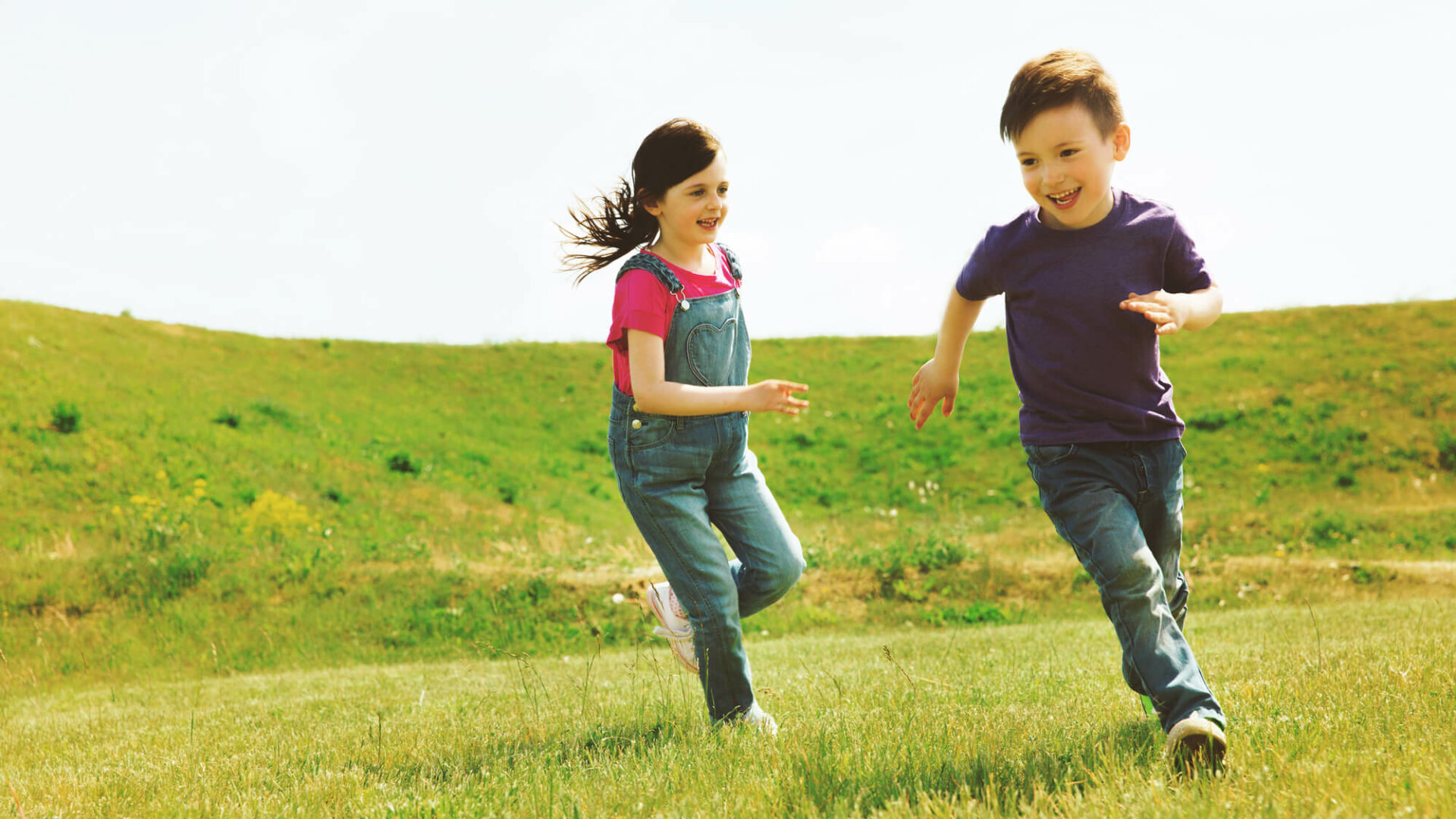“They don’t wind down. They ramp up almost like they’re on meth,”
my cousin in law said to me. It was about 10pm on a July summer night in the Pacific Northwest, and it started looking like something resembling dusk outside. His children—my second cousins—were running around outside alternating between the tent they set up in the yard and the house itself.
The house itself has a basement and a main floor, with stairs inside and stairs outside leading from the basement to the yard. While I was there every day of the summer this year, the children would spend about 12 hours a day doing the following:
- Playing with legos or toy cars
- The older one read sometimes
- The younger one would fiddle with his tablet trying to play games (sometimes, when he couldn’t figure out how to play certain things, he would say and say “dammit” to let his frustration out)
- Running up and down the stairs repeatedly, multiple times a day, sometimes at full speed
- Beating each other up
- Riding bicycles
- Going to karate class
- Jumping up and down with no rhyme or reason
In addition to all of that nonstop activity, the kids would eat. Between a seven and four year old, those kids could pound away some food, too, and it wasn’t out of the norm for them to share a pizza from California Pizza Kitchen (800-900 calories per whole pizza) in addition to eating nutrient dense foods for lunch—things like fruits, vegetables, and milk. For breakfast, they would usually have a package of oatmeal with “dinosaur eggs” in them. The coolest part about the oatmeal was making it for them and watching the eggs crack.
Many will likely blame the fact that these kids aren’t fat on the fact that they have “fast metabolisms.” If you plug in some stats in a generic calorie calculator on the internet, a seven year old boy’s TDEE can range from 1400-1700 calories, and recall that number is that which will keep you at the same weight, also known as your maintenance calories. As time goes on, children grow, and so do their appetites and BMRs.
After the growing stops, so too does a lot of physical activity. People go to grad school, get office jobs, loaf around unemployed or what have you. If the amount of food they eat stays constant, their body weight goes up. All because of two things:
- Non Exercise Physical Activity (NEPA) and
- Non Exercise Adaptive Thermogenesis (NEAT)
I’ve mentioned it before, but the main difference between the two is that NEAT is unconscious movement and NEPA is intentional. So, it’s the difference between fidgeting and moving furniture around your house. For simplification, I’ll just say “NEAT” and go on my merry way. Interestingly enough, NEAT can account for 10% of someone’s weight loss.[1] To put that in perspective, I had a client who once weighed 500lbs. He hated working out and by his own admission, he would workout because he knew he had to. Or rather, he felt he had to. In his spare time, he played video games and didn’t do much and he would come to me twice a week for training. He lost about 260lbs over the course of a few years, despite living a sedentary life. I say this not to brag, but I lead him to the water and he drank, as the saying goes. More importantly though, I want you to think about something. If NEAT accounted for 10% of his weight loss, that comes to 26lbs of weight lost by way of him moving unconsciously. Now, in the context of 260lbs, 26 of them might not seem like a lot, but if you lost it without thinking about it, that’s kind of cool.
Here’s another example. I was on a date and the person I was with mentioned that our phones track our steps. In addition to beginning my obsession with getting ten thousand steps in everyday, I decided to look back at some of the data my phone accrued. Currently, I live in Seattle. It’s decidedly a walking city. I walk a mile to the gym and back to the house right after. Then, I walk a half mile and back to a coffee shop to write chapters for things like The Complete Contest Prep Guide. By this time, I have already gotten three miles of walking in, which comes out to about six thousand steps. When I looked back at the steps I took when I was living in Tampa, Florida—very much not a walking city, unless you like horrid humidity and sweating all the time—I would seldom walk more than a mile a day. Needless to say, I wasn’t conscious of the newfound physical activity, but I became more aware of it when I decided to weigh myself and note that after eating a ton of delicious food here, I hadn’t gained anything.
All these anecdotes serve a purpose. I won’t leave you hanging there. The purpose is to think outside the gym and more about the totality of your life for long term health. It should also come as no surprise that having a higher BMI is associated with greater all cause mortality. [2] By virtue of you being here, you know that energy balance is the number one factor in weight loss (though other things might affect that). So knowing that, and knowing how we go from active to inactive over the course of time, what are we to do if we just want to stay healthy and at a decent weight?
Strategies
The first, and in my opinion, easiest strategy is to move more. I know it’s cool to say “eat less, move more” but most people, outside of coaches or researchers, likely don’t know what the hell that actually means in terms of application. So as adults, we don’t have after school programs anymore and we also don’t have parents to sign us up for rec league sports we might not want to play. The good news about that is we also don’t have our parents yelling at other parents in the bleachers while they watch us play. So, here are ways you can move more:
- Walk more – If you put your mind to it, anything can be walking distance. If you live in a city like Seattle or New York, this becomes all too easy. The population density of these cities makes it easier to find the things you need in walking distance. A job, grocery store, gym, BDSM clubs, book stores, and other fun adult activities can all serve as opportunities to get your steps in. In addition, you could take the stairs, park further from the entrance of your destination (if you’re in Florida, park where there is shade so you don’t melt when you get in your car), or, and this is a wild one, don’t carry all your groceries in one trip to the house from the car.
- Play a sport – With the advent of meetup groups and adult kickball leagues, you can easily get in a few rounds of fun physical activity over the course of the week. And it doesn’t have to be kick ball. Sometimes, companies have softball leagues, or something like that. The main point, here, is that you have to look for them. These opportunities, like all opportunities, aren’t just going to plop themselves in your lap.
- Take up LARPing – You might not know what it means to LARP, but I will tell you. And be aware, it’s dorky. LARP stands for “live action role playing.” Imagine that you are playing Dungeons & Dragons and you decide one day you want to dress up as your character and act out what your character is doing. Further, your friends want to do the same. So, you start acting out this fantasy of adventuring and fighting (all in fun, obviously) and you have a great time. If you are playing a four hour long adventure, you’ve got four hours of physical activity you didn’t have when you were playing your same D&D adventure at the table, drinking Mountain Dew and eating Doritos.
- Make your date nights physical – No, I don’t mean banging every date night. In fact, I am not even including sex as a part of this. However, you could practice ballroom dancing with your partner. If you are already adept at dancing, you can make that the date in lieu of something food focused. Other alternatives include rock climbing, walking around, running an obstacle course race, or even doing any of the previously mentioned activities together. Nothing says love like forming a spell casting team and casting a Magic Missile together.
The second strategy, of course, is to eat less. I will tackle this with a more general audience in mind. Now, as a brief reminder, there are no bad foods. But there are foods that have a higher calorie content than others. Eating too much of them will cause you to gain weight. Now, you know all that already. So I can’t leave you without any actionable advice. Here it is:
- Mind the fat content. One gram of fat has nine calories. Things like butter, salad dressing, cheese, coffee creamer, olive oil, and coconut oil all have fat in them, and most people don’t measure these items. Those calories can add up. Simple alternatives would be to use lower fat options of these things or to use less of the actual ingredients themselves. All credit to colleague Leigh Peele for saying something to the effect of “how beneficial it is to track fat if you won’t even track anything else simply because of the caloric cost of fat?”
- Monitor your satiety cues. If you are from the south, this might sting, but you don’t always need to clear your plate. If you condition yourself to always do so, you might override your satiety signals and overeat often. Instead, pay attention to those signals. Ff you find yourself satiated, stop eating. Box your food up. Give it to the dog. Let your extremely active children have it. Save it for another day.
- Eat your vegetables first. I like this one. By eating your vegetables first, you ensure that you are getting your micronutrients in along with some fiber. Pretty easy, right?
- Eat your protein second. Protein is a high satiety food (meaning it will make and keep you feeling full) and important for muscle growth, as well as the growth of other tissues like hair, skin, fingernails, and the like. As you do that, look at the step before last. This means you might leave behind some extra fat and carb calories that you’d otherwise mindlessly eat. See how it all ties in together?
Conclusion
There you have it. Actionable strategies that outline how to both eat less and move more. I realize that some of them, depending on the type of person you are, might be a little out there. And that’s completely ok. I wouldn’t be caught dead LARPing myself, despite my love of D&D, but I wouldn’t judge anyone else for it. It just isn’t my thing. No, the main point is, as mentioned, to think outside of the box. The world is full of activity and all you have to do is find it.
References
- (n.d.). Long-term persistence of adaptive thermogenesis in … – NCBI – NIH. Retrieved September 21, 2018, from https://www.ncbi.nlm.nih.gov/pubmed/18842775
- (n.d.). BMI and all cause mortality: systematic review and non … – The BMJ. Retrieved September 21, 2018, from https://www.bmj.com/content/353/bmj.i2156

